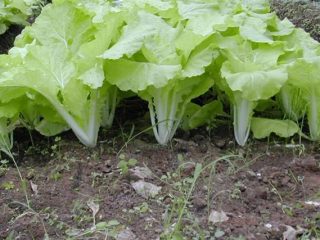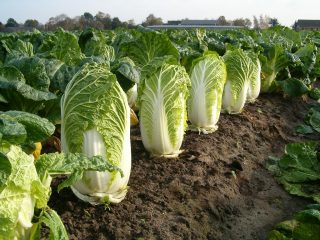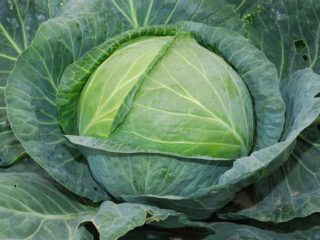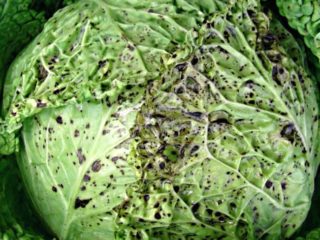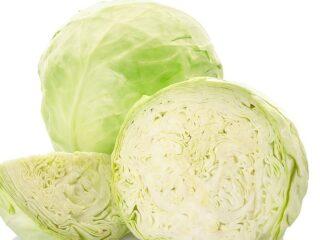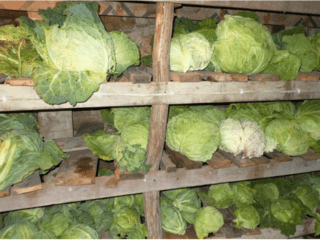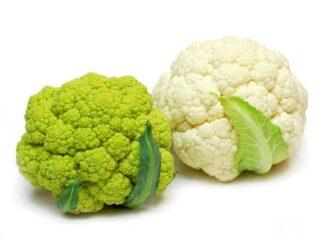Content
It is recommended to feed cauliflower with potassium-phosphorus compounds, as well as boric acid, for good formation of ovaries. It is equally important to provide nitrogen substances, especially at the beginning of the season. Fertilizing is applied at the seedling stage and after transplanting into the ground.
What fertilizers does cauliflower need for ovary?
One of the common problems when growing cauliflower is that the plants do not set ovaries or the inflorescences are too small, and the yield is significantly reduced.
To prevent these consequences, already at the beginning of the formation of heads of cabbage it is necessary to apply the following fertilizing:
- superphosphate;
- potassium compounds (sulfate or chloride);
- boric acid;
- special stimulants (for example, “Ovary”).
Basically, the compositions are applied by the root method, but in some cases they are sprayed.For example, boric acid is used for treatment in the form of a diluted solution (1 g of powder per 10 l).
Signs of mineral deficiency
As a standard, fertilizing is applied 3-4 times per season, using normal concentrations. But in some cases it is necessary to add fertilizers. This is done when obvious signs of a lack of certain elements described in the table are detected.
Shortage | Signs |
Nitrogen | Stunted growth, pale leaf color, bluish on the lower leaves |
Phosphorus | An abrupt stop in growth, heads are not formed, the foliage is small and purple in color |
Potassium | Leaves turn yellow, tissues die, resemble burns |
Bora | Darkening spots and voids in the heads |
Magnesium | The leaves become light, but the veins do not change color |
Molybdenum | Heads are not formed |
How to feed cauliflower in open ground
It is necessary to feed cauliflower with both mineral and organic compounds for rapid growth and head ovary. It is advisable to alternate fertilizers, and apply them at intervals of at least 10-15 days. If the soil is sufficiently fertile, these concentrations should be slightly reduced.
If the soil is depleted, fertilizing is applied not only during the cultivation of cauliflower, but also before planting. For example, when digging, you can cover it with humus or compost you prepared yourself.
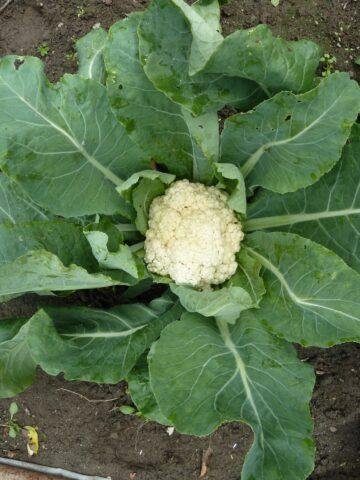
Cauliflower is fed alternating organic and mineral compounds.
Mineral fertilizers
The crop needs primarily mineral fertilizers. They dissolve well in water and are quickly absorbed by plants. Most often, gardeners use the following compositions:
- Ammonium nitrate is one of the main sources of nitrogen. It is applied both at the seedling stage and after transplanting into open ground.Provides rapid growth of green mass. At the flowering stage, this feeding should not be given, since the inflorescences will be small, and the leaves, on the contrary, will be large.
- Superphosphate and potassium compounds (potassium sulfate and potassium chloride) are good feeding for cauliflower during the setting of heads. Usually they are added together, and ammonium nitrate is often added to the composition. Instead of a mixture, you can also use a ready-made option - a complex mineral fertilizer, for example, Kemira Lux.
- Boric acid is a product that is recommended to fertilize cauliflower for ovary. It should be applied foliarly - 1 g of powder per 1 liter of hot water, after cooling, dilute to 10 liters. The first feeding is done when white inflorescences begin to form, and then after another two weeks to stimulate their growth. This ensures a good harvest.
Organic fertilizers
Organic fertilizers serve as a source of nitrogen, phosphorus, potassium, and calcium. Unlike mineral fertilizers, they decompose more slowly in the soil, but they feed the plants evenly throughout the season. The most commonly used organic compounds for cauliflower are:
- Compost and humus saturate the soil well with all the necessary substances. They should be applied two months before planting in an amount of 8-10 kg per 1 m2.
- Mullein is fermented cow manure, which is infused in water for 7-10 days, then diluted 10 times and watered over cauliflower plantings.
- Bird droppings are another organic fertilizer that enriches the soil with nitrogen. For application, use an infusion diluted with water 20 times.
Complex fertilizers
You can prepare mineral compositions yourself by measuring each component on a scale. On the other hand, it is easier to purchase ready-made complex fertilizers, for example the following:
- "Nitroammofoska";
- "Ammophos";
- "Potassium nitrate";
- "NPK(S)";
- "NPK(S)+B";
- "Kemira Lux";
- "Ideal" and others.
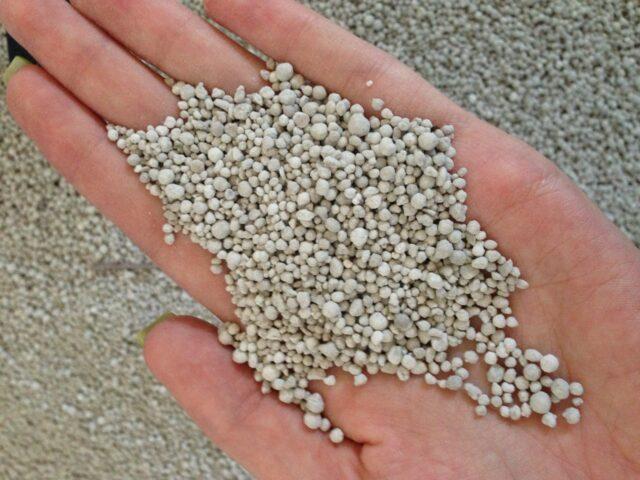
Ammophos is produced in granules, soluble in water.
All described fertilizers are water soluble. They have a universal composition and can be used for both cauliflower and other crops.
Feeding cauliflower with folk remedies
To quickly gain green mass and ensure good head setting, not only chemical fertilizers are periodically applied, but also folk remedies. The most effective recipes are described below.
Dry and raw yeast
Regular baker's yeast is added to form heads. You can use both dry (1 sachet) and raw (100 g) yeast. In both cases, they are dissolved in warm water, add 2 tbsp. l. sugar and leave overnight in a warm place, and then start watering.
Ash
Wood ash is a good source of potassium and phosphorus. To apply, take 200 g and leave it in 10 liters of water for several hours, then water it. If you don’t have time, you can simply scatter it over the surface (200 g per square meter) and immediately water it. This is done at the beginning of the formation of heads of cabbage.
Boric acid
Boric acid is one of the best fertilizers for the formation of cauliflower ovaries. It is used twice – when the inflorescences have just begun to form white “fruits”, and then after 14 days. To obtain a solution, 1 g of powder is dissolved in hot water, then brought to a total volume of 10 liters. Spray with a sprayer.
Potato peel
Potato peels are an effective and virtually free fertilizer that serves as a source of potassium and phosphorus. Apply during the formation of inflorescences. To prepare the fertilizer, it is better to use peelings of raw potatoes, since after cooking the peels lose their layer of starch. You can store them in the freezer, on an unheated balcony. Or dry and then grind into powder in a blender.
Before use, pour boiling water over them and let stand for several days. Then filter, dilute with water twice and water the plants at the root.
Spoiled jam
Fermented jam is used as a top dressing in combination with other components:
- cut greens (weeds);
- honey;
- yeast.
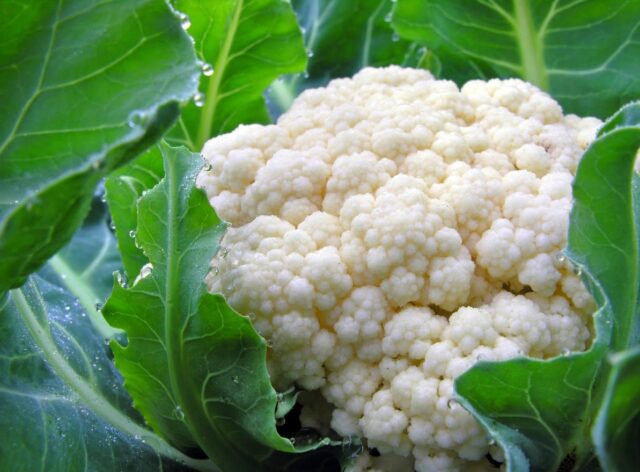
For good yield, folk remedies are applied every two weeks.
All ingredients are poured with water and left for several days, after which they are filtered and watered. It is better to do this during the formation of the ovaries.
Fertilizer application methods
Fertilizers for cauliflower are applied in two main ways - direct watering and foliar spraying. The first option is more common, and the second is used in cases where there is a clear lack of microelements.
Foliar feeding of cauliflower
For foliar feeding, prepare a solution with a concentration 1.5-2 times less than for root feeding. It is poured into a spray bottle and all leaves and stems are sprayed. You need to work in cloudy weather, and if it’s sunny outside, in the late evening. There is no rain in the forecast.
Spraying at the root
For root watering, use solutions of normal concentration. After transplantation, nitrogen fertilizers are used in the first stages of growth, and potassium and phosphate fertilizers are used during the formation of ovaries.Watering can be given at any time, being careful not to get on the leaves and inflorescences.
Timing and feeding schedule
When fertilizing cauliflower, it is important to follow the timing, since different substances should be given in a timely manner. At the stage of growing seedlings, fertilizers are given several times:
- 10 days after picking or after the formation of the second leaf, cauliflower is watered with a solution consisting of the following components: 40 g of superphosphate, 10 g of potassium chloride and 20 g of urea (per 10 l).
- 10 days after the first feeding, give a solution of 30 g of urea and 20 g of potassium chloride (per 10 l).
- At the stage of forming the fourth leaf, 2 g of boric acid, 1.5 g of manganese sulfate and 0.5 g of ammonium molybdate (per 10 l) are added.
After transfer to open ground, summer residents apply fertilizer several more times per season, adhering to the following scheme:
- The first time feeding is given two weeks after transplanting the seedlings to a permanent place. It is recommended to give organic matter, for example, dilute mullein with water in a ratio of 1:10 and let it stand for a week.
- The second feeding is applied 10 days after the first. This time, phosphorus-potassium compounds (40 g of superphosphate, 2 g of potassium chloride), as well as ammonium nitrate (30 g) and boric acid (2 g) (per 10 liters of water) are used as fertilizer for cauliflower.
- Next, you need to feed the cauliflower to set a head of cabbage. As soon as the heads of cabbage begin to form, give mullein, diluted with water 8 times, and add ammonium nitrate (30 g), superphosphate (30 g) and calcium chloride (20 g).
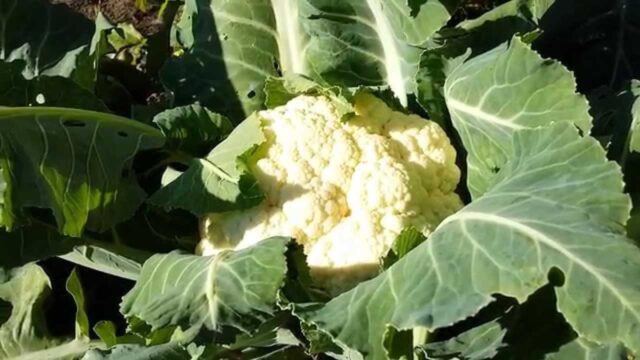
Plants should be fed 3-4 times per season
After tying, you should feed cauliflower only in cases where there are clear signs of a lack of one or another microelement, described above.In this case, it is worth focusing on the condition of the plants. If they grow normally and form heads of cabbage together, there is no need to apply fertilizer in large quantities - the indicated dosages are reduced by 1.5-2 times. It is important to understand that overfeeding is worse than underfeeding.
Conclusion
Feeding cauliflower is necessary both for accelerated growth and for the friendly formation of ovaries. Timely application of fertilizers increases resistance to pests, diseases and adverse weather factors. It is important to carefully follow the indicated dosages to avoid excess.
